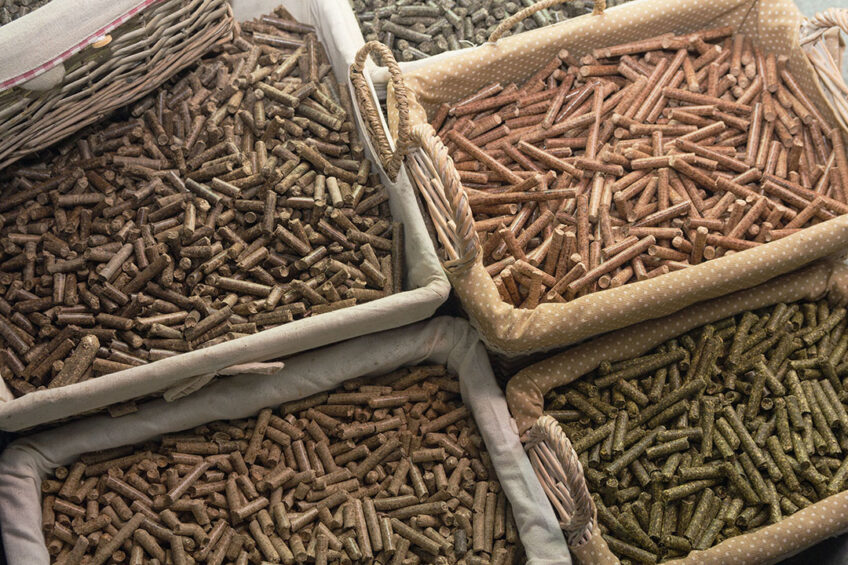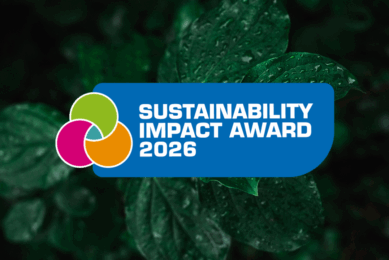Proteases: Even more to offer than just cost cutting and sustainability

The capabilities of proteases are not as well understood as they should be. That was the main message of a presentation at the recent Animal Nutrition Association of Canada Conference by Dr Ludovic Lahaye, director of the Applied Scientific Curiosity department (R&D) at Jefo, based in Québec, Canada.
This group of feed additives therefore needs a close look in terms of the benefits they provide, and how to use them optimally in order not to waste their potential – or the potential of naturally-produced proteases.
“Feed costs are rising and thankfully there are many strategies we can use to curtail costs as much as possible,” Dr Lahaye explains. “We can better target the needs of our livestock animals and use precision feeding. We can do a better job in feed manufacturing to increase digestibility and so on. We can try and use cheaper raw materials. But we should also seek to fully understand additives such as enzymes and put them to their full use.”
… cutting in formulation costs, to positively impact on animal health and the environment as we bring the animal nutrition industry into the next era of precision intestinal nutrition.
Increases protein digestibility
Among the various types of enzymes on the market, proteases increase protein digestibility of feedstuffs and therefore allowing farmers to save money through reducing major protein ingredients like soybean meal in the poultry ration, for example.
From an environmental perspective, proteases have received more attention in recent years as well. Lahaye explains that “better digestibility of amino acids through protease use also means there is lower excretion of nitrogen in livestock waste. Proteases can also be useful to offset variability in raw material protein. This is all good for sustainability.”
Lesser-known benefits
Whilst these basic benefits of proteases – increasing the amino acids digestibility of feeds – are well known, Dr Lahaye explains that there are others that are not as well known. Also, there are pre-conceived ideas about proteases that need to be addressed in order to get the maximum benefits from their use.
“Rather than taking into account solely the ability of proteases to enhance feed digestibility, which certainly allows us to save money through the use of recovery matrices and the subsequent reduction of protein inputs, we would benefit from better understanding and exploring the full properties of proteases and the related benefits of those as well as their mode of action” he says.
“Among pre-conceived ideas is the fact that exogenous proteases may interfere with the actions of other exogenous enzymes. In fact, proteases can and should be used in combination with other enzymes (as phytases or xylanases). However, the conditions of their combined use should be evaluated case-by-case since there are many ways to formulate feeds and consider enzymes contributions.”
Dr Lahaye adds that “moreover, proteases can resist anti-nutritional factors, help modulating the microbiota, participate in a better gastrointestinal health and overall improve digestion. All this goes well beyond the main traditional use of proteases to enable a simple cutting in formulation costs, to positively impact on animal health and the environment as we bring the animal nutrition industry into the next era of precision intestinal nutrition.”
… we experienced positive effects of protease to help reducing diarrhoea during piglet weaning… studies show that protease use could also reduce campylobacter populations in the chicken gut.
Metabolic efficiency and more
Although this area needs more research, Dr Lahaye also points out that while proteases work on proteins in feed, they also most probably work on endogenous proteins in digestive excretions as well. This allows a better re-absorption of endogenous material produced by the animals during digestion and as such, improves the efficiency of metabolism instead of having this endogenous material being lost in manure.
In addition, it’s often observed that the lining in the guts will stay in better condition with use of proteases. Protein digestion is a harsh process that can affect the lining, says Dr Lahaye. That is, when proteases allow the level of protein in the feed to be reduced, and most probably help for a better efficiency of endogenous proteins cycling, proteases surely contribute to a better gastro-intestinal health and hence efficiency.
Gut Health in pigs & poultry
“The gut is the engine of the animal and it’s critical to protect it as much as we can,” he notes. “As such, we experienced positive effects of protease to help reducing diarrhoea during piglet weaning. From a disease perspective, recent University of Montreal studies show that protease use could also reduce campylobacter populations in the chicken gut.”
Aids in heat stress
Dr Lahaye adds that proteases also have a positive effect during heat stress. “The activity of endogenous enzymes decreases when the animal experiences heat stress and so digestibility drops,” he explains. “Using exogenous proteases helps fill that gap.”
A way to save money not an extra cost
Looking at specific protease functions, there are many protease products currently on the market, and farmers need to choose wisely in order to get maximum benefits. That is, Dr Lahaye urges farmers to view protease product purchases as a way to save money instead of viewing the purchase as an expense that helps cut input protein costs.
Choosing the right protease
This means in making protease decisions, purchased exogenous proteases should not overlap in function with the ones the animal in question already produces, but instead, complement them.
“For instance, your purchased proteases should be able to resist natural protease inhibitors such as the Kunitz trypsin inhibitor,” explains Dr Lahaye. As researchers from Canada and India confirm in a recent paper, there are protease inhibitors commonly found in soybean that are not being readily inactivated by feed heat treatment due to the presence of disulfide bridges.
In making protease purchases, Dr Lahaye adds that it’s also not well known that exogenous proteases can do more than endogenous protease can do. This means they can hydrolyse the proteins in one or more locations beyond the slices achieved by the natural proteases. “Therefore, adding capability to what the endogenous enzymes already do means we improve overall nutrient digestibility,” says Dr Lahaye.
Moreover, he advises livestock producers that protease purchasing decisions should also be considered with regards to reality and not theoretical possibility.
“What I mean that in vitro (lab) tests on enzymes (often used to assess enzymes capabilities or possibilities) are not necessarily representative to their actual in vivo (animal, trial-proven) functionality,” Dr Lahaye explains. “What happens in a test tube is often quite different to what enzymes face in the guts of animals. Therefore, choice of an additive should in priority be based on its assessment in in vivo conditions, demonstrating what is expected of the additive: an added profit, with healthier and more sustainably produced animals.”











